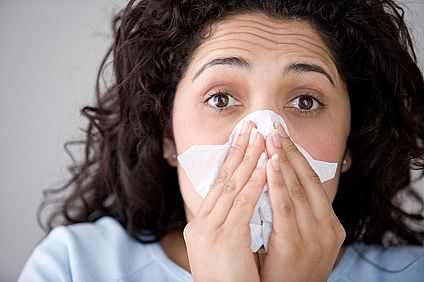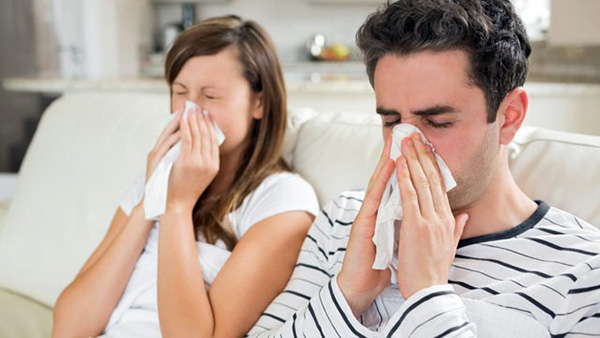A cold is an upper respiratory tract infection caused by a virus. Symptoms include runny nose, sneezing, sore throat, cough and sometimes fever. Flu has almost all the above symptoms and is caused by another virus. The two diseases are difficult to distinguish, except that the person sick with flu may have higher fever.
There are three types of cold: Cold Type: aversion to cold, lack of sweating, sneezing, feeling slightly feverish, and thin white mucus and coughing. Particularly occurs in winter or spring. Hot Type: fever, sweats, sore or itchy throat, dry mouth and nose, coughing, and thick yellow mucus or runny nose. Particularly occurs in late spring or early autumn. The Wet Type Fever, feeling of heaviness in the head, nausea, swelling in the lower chest or abdomen. Appears especially during the heat.
When to go to the doctor?
If you have a fever or if it persists more than two or three days, or if you feel intense pain in the ears, stomach, lung and head. If you have swollen tonsils or lymph nodes in the neck and breathe hard or whistling.
Indications for daily life
Drink plenty of water or green tea. Drink eight cups of water daily. Eat easily digestible things. Eat more garlic and onions, and foods rich in zinc, such as milk, soy milk, lean meats, fish, beans and cheese. If you do these things, you are less exposed to cold: Dress warmly, especially the legs. Watch for changing weather. If you catch the rain, drinking tea with five slices of ginger and a teaspoon of brown sugar. Unwind. Do not get involved in any exhausting activity. Sleep enough.
Washing hands frequently can prevent colds. Summer wash your face and nose with cold water. Gradually expand the area until you get to do a really cold shower. During flu season, rinse your mouth with salt water (one teaspoon of salt to 250 ml of water). The house should be warm and with a humid air cleaner. During flu season, smoke the house with some vinegar (water mixed). Put the liquid on a stove to sterilize the air.
What should you do
Avoid spicy foods, too salty and greasy. Avoid cold and raw foods. If you feel that you are about to chill, do not eat watermelon or cucumber. Do not drink alcohol. Do not go to bed right after you brush your head. Dry your hair first. Avoid crowded places if possible. Avoid strong blow your nose, to avoid contracting an ear infection. Blow one nostril at a time. If you have a cold, do not travel by plane.
Traditional remedies
Give 250 ml of hot wine vinegar and soak a towel in it. Keep your napkin under your nose and inhale the steam for two minutes. Be careful not to burn. Cover your mouth and nose with a warm, damp towel. Set a hair dryer at minimum power and keep a girl headed for one minute. Tissue should always be hot and humid. Repeat procedure three times a day. Be careful not scalding. In the early days of cold, keep the fire with tongs, a tangerine, twisting it until it emits a continuous intense flavor. Symptoms may improve if you put toothpaste in the grooves on both temples and under your nose up above half.
Choose one of the options and apply it once a day: Rub your palms to warm up and then caress your face from forehead to chin and temples to the jaw, until you feel warmed. Pointer with the middle fingers and push the skin from the point between the eyebrows to your temples for a minute. Rub with your fingers several times back of the head. Also, rub several times in the crook of the neck, outside the two large muscles of the neck, which often touch themselves when you lean forward and bend your head neck.
Gently for one minute, two fingers point at the wrist ditch on the inner forearm, with the right thumb. If you have a congested nose, gently massage it for a minute. Rub and knead with your thumbs and his pointers for a minute, from the inner corner of eye to nose. If coughing, gently dip of the clavicles above the sternum for one minute.

